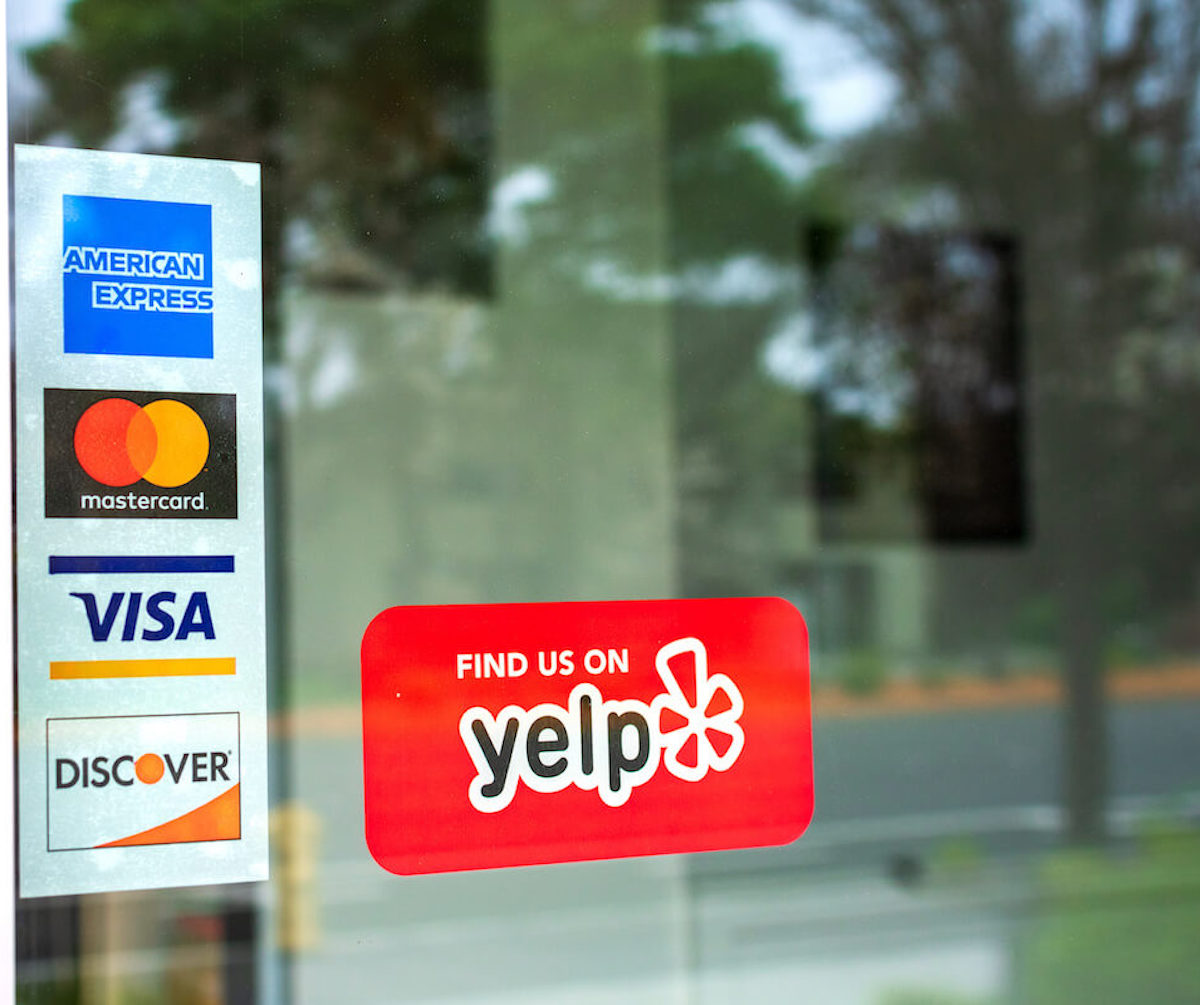Digital marketing for restaurants: Complete guide for 2025
Skip the article and turn takeaways into action by scheduling a call with our team.
It’s impossible to talk about a restaurant marketing strategy without digital marketing. Our lives seem to happen as much online as they do offline these days. The restaurant industry has adapted along with this, and online marketing for restaurants is now one of the best ways to attract potential customers to your business. It’s not just an option anymore—it’s essential.
Social media and smartphones aren’t going to disappear from your guests’ lives. And the variety of marketing channels for reaching them will only ever become broader. For this reason, it’s important to take a moment to evaluate your online restaurant marketing strategies. Is your website pulling its weight? What is your social media presence like? How are you handling things like local SEO or customer engagement like negative reviews? All of these aspects of digital marketing and more can help a business succeed if handled right.
So to make sure your marketing efforts achieve maximum benefits, let’s take a look at a few key areas to focus on. These broader areas are cornerstones of any restaurant digital marketing plan. While not exhaustive, they’re a great place to start.
1. Online marketing for restaurants: Web essentials

Your restaurant website is a vital part of any restaurant’s marketing plan. While some smaller restaurant owners have managed to get by without a big online presence, just about every restaurant has a website by now. Even the smallest marketing budget should incorporate it.
Restaurant website basics
When considering online marketing for restaurants, it’s a good idea to check that your site is doing what you need it to do. Visitors to your website should have no trouble finding:
- The menu: This is frequently the first thing that potential customers want to see! Make sure you have a button or tab that takes them straight to a current menu that’s easy to read on both a computer and a mobile device.
- Your hours: Every visitor to your site should quickly know when you’re open, especially if your kitchen is open late. Nothing spells lost opportunity like a diner getting excited to eat at your restaurant, only to get there and find you closed an hour ago.
- Contact information: Another easily overlooked piece of information that a lot of customers still want to know is your phone number or text service, like WhatsApp. It’s easy to include this information on your site, even on every page. Also include your address along with a map widget and/or a link to a navigation site to get them to your front door.
On the other hand, you don’t want to go overboard. Too many bells and whistles on a restaurant website can be off-putting to your target audience. The average user spends 15 seconds on a website. Extras like videos, music, and pop-ups can also make it difficult for customers to view your page on a mobile device. A clean, user-friendly landing page with links to key information is a good place to start.
We’ve gone into the topic of building a great restaurant website in greater depth in its own article. It’s a cornerstone of online marketing for restaurants.
Next online steps
Once you’ve got the basics in place, your site is also a perfect way to highlight your other offerings, including:
- Use beautiful photos: High-quality photos of your food, location, and ambiance convey who you are and what your restaurant brand represents. Whether you use your own photos or hire a photographer is up to you.
- Online ordering and reservations: Why not encourage your visitors to order right from your website? Yelp for Restaurants can streamline this process from top to bottom. We’ll talk more about that later, but allowing your customers to book a table or place an order from your site makes it easy to turn a view into a sale.
- Coupons and special offers: Your site is a great way to introduce yourself, and you can take this opportunity to give visitors an incentive to order from you. A potential customer who’s visiting your site is already interested, and a little added bonus could be what brings them in the door.
- Links to social media platforms: Instead of relying on a separate search on the platform or third-party search engine, consider inviting visitors to follow your other online presences right on your web page.
Search engine optimization (SEO)
An important aspect of any online marketing strategy for restaurants is search engine optimization, or SEO. When putting together your restaurant website, it’s important to take extra steps that make your content noticeable to search engines in addition to customers.
Here’s a helpful primer on this topic if it’s relatively new to you. And while it can sound a bit daunting, the process isn’t as complicated as it may sound. There are a lot of ways to make SEO work for you in online marketing for restaurants, including some great Yelp offerings listed below.
Local SEO
Local SEO tactics include keyword analysis for your restaurant in your area. Local SEO can get pretty fancy, but the main idea is to ensure you have your restaurant type, your city or area, and the name of your business in the text on your webpage. So your copy on your homepage could look something like, “We’re proud to be one of the finest Chinese restaurants in Kansas City,” for example. That’s really the shallow end of the SEO pool, but it’s a good start.
Google Business Profile
Claiming your Google My Business Profile page is an excellent way to make it easy for customers to find you among other local businesses. You can have your contact info, website, photos, and more prominently displayed on Google when customers search for you. Your business listing will also be added to Google Maps this way. It’s free and an absolute must for digital marketing strategies for restaurants.
2. Restaurant branding
Before launching any digital marketing campaign, you’ll want to ensure your restaurant branding is consistent and accurately reflects your business. Since brand awareness essentially means being able to quickly convey what your restaurant is all about—and online attention spans are short—you want your brand identity to be instantly recognizable. Good places to start include:
- A regular color scheme and font: The same color palette and font used across all your promotional materials to help cement an image in customers’ minds.
- A unique brand personality: Consider the “voice” you’re using in online marketing. Are you fun, serious, high-brow, reserved, or high-energy? Keep a consistent theme in mind in your tone when creating marketing materials, from written materials to short-form video.
- Authentic content: The digital world is full of phonies, and internet users have a keen sense for when a brand is inauthentic. Keep your message sincere and be who you are, demonstrating the human side of your business. Photos and videos showing the customer experience can go a long way in establishing your brand as authentic.
- Your online community: The regular customers a restaurant has say a lot about what kind of establishment it is. Encourage online engagement from your customers so that others will know who you usually attract—so that the like-minded can join in on the fun.
3. Email marketing

We’ve gone into greater detail on building an effective email marketing program in its own separate article. While sometimes overlooked, a periodic email newsletter is one of the most effective marketing tools for maintaining customer relationships in the restaurant business.
Customer loyalty: Emailing just enough
Email campaigns need to keep your repeat customers’ needs in mind. You want to maintain a good level of contact, but you don’t want to send so many emails that guests mark them spam. While some recommend sending up to twice a week, monthly is a safe rule of thumb for email newsletters. But offering discounts, birthday comps, and other loyalty programs is a very effective way to keep your best customers coming back again and again. The right incentives can turn a new customer into a regular in no time at all.
Email promotions
There are plenty of tried-and-true ingredients to put into your email newsletters. You can use special events or giveaways to bring your customers in, such as holiday menus, discounts, happy hour, and live entertainment. Introduce new menu items with special promotional discounts and help cultivate a sense of insider belonging among your core customers.
Get creative
Additionally, don’t be afraid to be creative. Try sending out “members only” passwords to your subscribers for free appetizers. Plan off-the-wall holiday celebrations, like a Groundhog Day event with promotions that vary depending on whether or not the groundhog sees its shadow. Many Mexican restaurants celebrate Cinco de Mayo, so why not celebrate Bastille Day at your French restaurant, or National Beer Day in your brew pub?
A well-crafted email list can take time to develop, but once you’ve done so, email marketing is likely to become one of the easiest and most rewarding elements of your digital marketing strategy.
4. Social media marketing

Social media is a whole different area of online interaction, but the approach is frequently quite similar to that which you’d take with other areas of digital marketing. Like your restaurant website, you want to exhibit a straightforward presentation of the information your potential customers want to see the most. This means that your menu, contact information, and hours of operation need to be prominent on your Facebook page and readily accessible on your Twitter and Instagram profiles.
There might be some crossover with your email marketing strategy. Cross-post your event announcements, special menu items, and other marketing ideas on your social media accounts. While you may want to keep some promotions reserved for your email subscribers, many online marketing strategies for restaurants will cross over naturally from email to social media outreach.
Tik Tok
TikTok is a leading social media app among younger demographics and its explosive growth means that building a platform there can help you reach more potential customers. If this is your first time making videos and you don’t know a Tik from a Tok, lean on the younger members of your team for help. The natural performers on your staff will love being in videos, and your millennial and Gen Z team members will probably have tons of ideas for trending sounds and formats that work with your restaurant. This beginner’s guide will help you create your first video in no time.
Instagram, Facebook, and X
Different customers prefer different social media channels. Some like to see beautiful photos from your menu on Instagram, while others get excited by special offers in their X feed. With this in mind, it’s more important now than ever to be sure you have a strong presence that reflects your restaurant brand across a few key social media platforms.
Facebook ads can be helpful as well, as can ads on Instagram, which is very photo-friendly. If you decide to go the paid advertising route, be sure to keep an eye on your spending and how much return you’re actually getting. Facebook ads can be hit or miss, and in our experience, it’s more effective to have organic engagement than paid ads on Facebook.
Note that hashtags on X are now essentially obsolete. Hashtags on Instagram are still valuable, but need to be carefully curated to be specific enough so as not to overwhelm a user’s feed. For example, put “#Detroitpizza” instead of just “#Pizza.” Keep hashtags to 5 per post at most.
Encourage user-generated content
User-generated content is one of the most effective restaurant marketing tools. Encourage customers to share their photos and videos of your restaurant with a few ideas:
- Social media competitions for the best photos, captions, or quizzes. Ensure the prizes are worth participating in, e.g., significant discounts or a free bottle of wine.
- Make photo-worthy tables and ambiance to encourage customers to take and share photos and videos.
- Keep your social media page lively by regularly responding to customer posts and frequently updating your own social media posts to drive engagement.
Work with influencers
Influencer marketing can give your restaurant the lift and visibility you couldn’t accomplish on your own on social media. If you’re clueless on navigating modern social media, an influencer like a blogger or video influencer could be the perfect partnership. You either pay them or give them free or discounted food (or both), and they create content that matches both their personality and your brand goals. As a result, people who follow them will be influenced to come dine with you.
Yes, some influencers are just looking for free food, so be sure to vet their profile, use a contract, and ask them for their media kit so you can see what their engagement is like. An average engagement rate is about 1-3%, and any higher is very good.
The influencers you collaborate with don’t need a celebrity-level following. Often people with smaller followings have higher engagement, because they’re seen as more authentic and trustworthy. These are called micro-influencers, and a good engagement rate for them hovers around 5-6%.
If a potential partner doesn’t have a media kit or isn’t willing to sign a contract for a collaboration, it’s best to move on. You might never see that content they promised you.
5. Yelp for Restaurants

While you can spend a lot of time and energy incorporating keywords into your website and social media platforms, a lot of these features are easily available by integrating with a platform you and your customers are already familiar with: Yelp.
Review management
Almost half of all customers say they check Yelp rankings and online reviews before they visit a restaurant. Be sure to respond to both positive reviews as well as negative reviews so customers understand your establishment is indeed made up of real humans. Having a solid array of customer reviews is key to having your restaurant perform well on Yelp. Encourage customers to share photos and reviews of their dining experience by leaving a placard on the table.
Yelp Ads
Restaurants that use Guest Manager paired with Yelp Ads experience 87% more traffic on their Yelp business page. A lot of the search engine optimization techniques we mentioned above are built in and managed by experts when you use Yelp Advertising. This keyword and area targeting ensure your online marketing ideas for restaurants are getting in front of the perfect audience.
Yelp toolkit
In addition to Yelp Advertising, Yelp Guest Manager incorporates many of the best restaurant features listed above. Waitlist and reservation management, online ordering, performance analytics, and much more are built into an easy-to-use system. Guest Manager interfaces directly with your POS system and can send SMS messages to communicate with customers.
These services are designed to work together from the ground up. Not only do Yelp services integrate seamlessly with one another, but they can be easily linked to from your website, social media, and email newsletters as well.
Yelp offers social media booking links for restaurants that direct customers right to your reservation page from mobile apps. These are unique URLs created by Guest Manager to be shared on individual social media platforms, and the service comes free of charge for Guest Manager users.
6. Keep track of metrics
Your metrics will give you a good idea of what marketing campaigns are working and what aren’t. Track metrics across all platforms, focusing on:
- Engagement rates: Likes, comments, shares, and views all indicate what resonates with your audience. Widely shared posts are an excellent indicator that your marketing campaign hits a positive nerve with your customer base. Posts that have high views but low likes show that your marketing is reaching lots of people, but may need tweaking to make more engaging content.
- Follower growth: Consistent follower growth on social media platforms shows your campaigns are doing something right. Ideally, your social media followers are or will become your loyal customers as well, and will help spread your message.
- Website traffic and conversions: Follow your website traffic and conversions like reservations or online orders that are linked to your website, email, or social media performance.
7. Bringing it all together

Maintaining a strong online presence won’t just bring in new customers; it’s also central to building repeat business. Whatever method or platform your customers may use to find a restaurant, it’s critical that they can find you there.
Yelp for Restaurants has tools and strategies to bring your restaurant marketing ideas together. We think there’s no easier or more effective way to ensure your online restaurant marketing plan works seamlessly and maximizes your outreach.
Contact us for a demo with an expert to find out more about how Yelp can help to make your restaurant strategy the very best it can be.